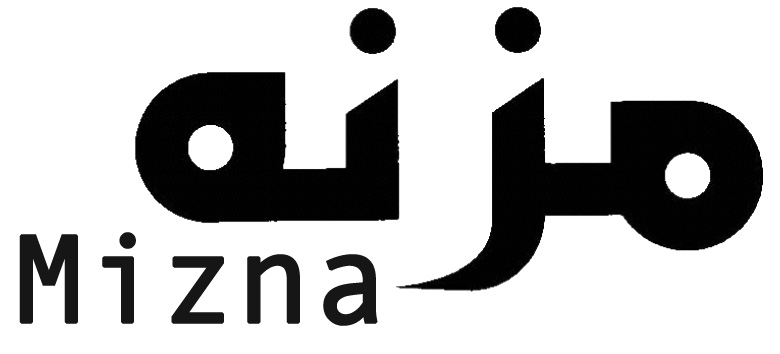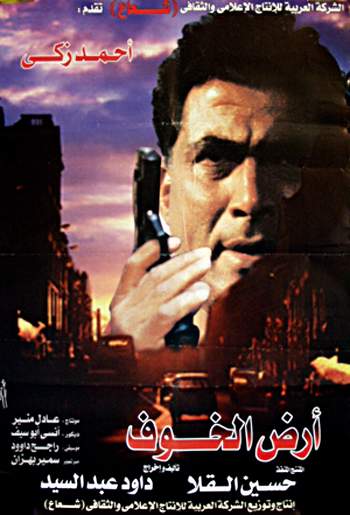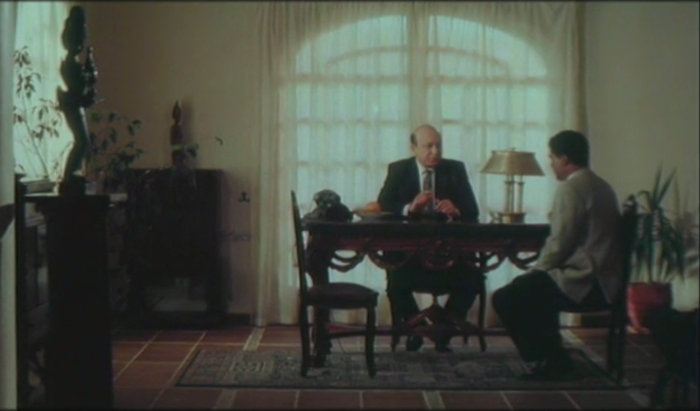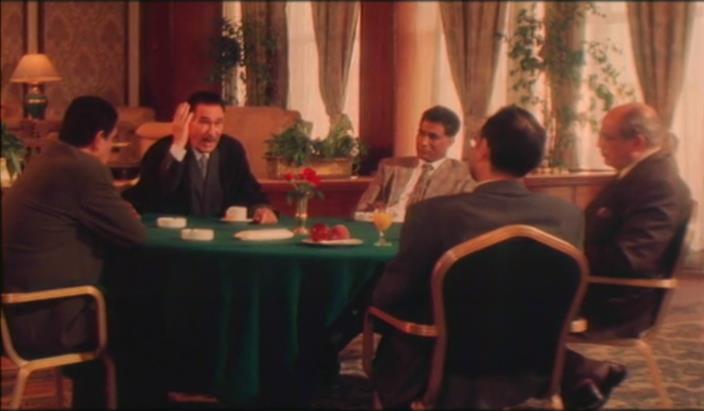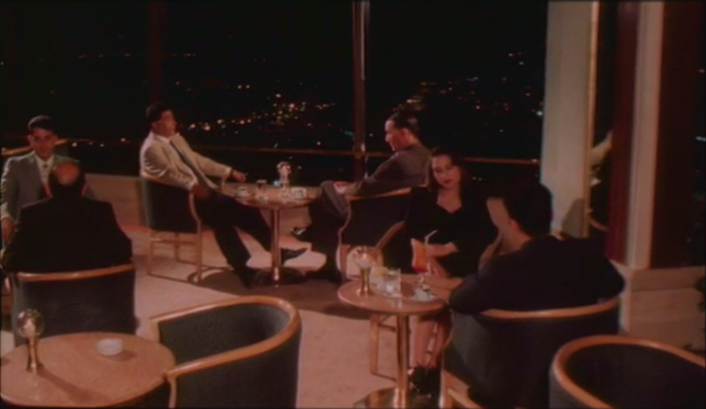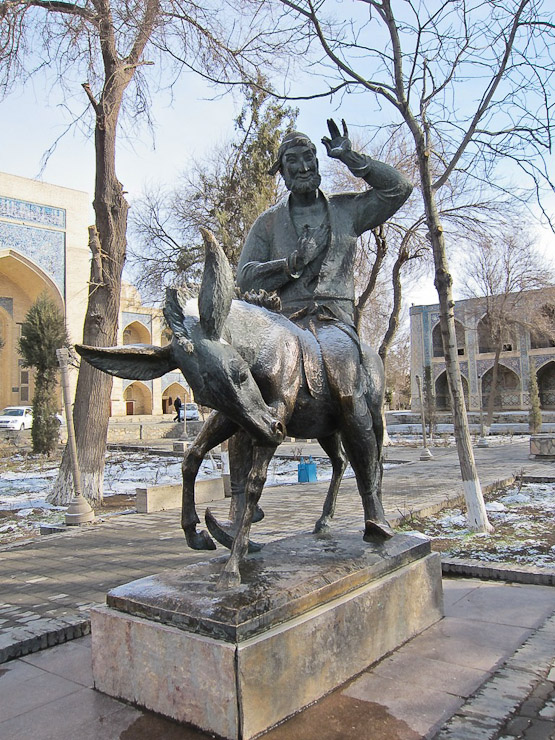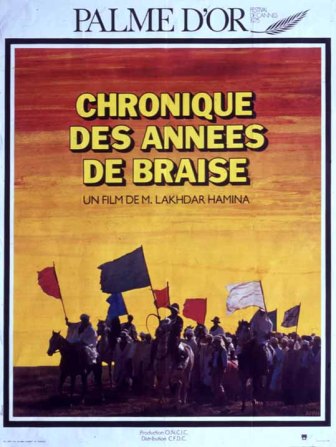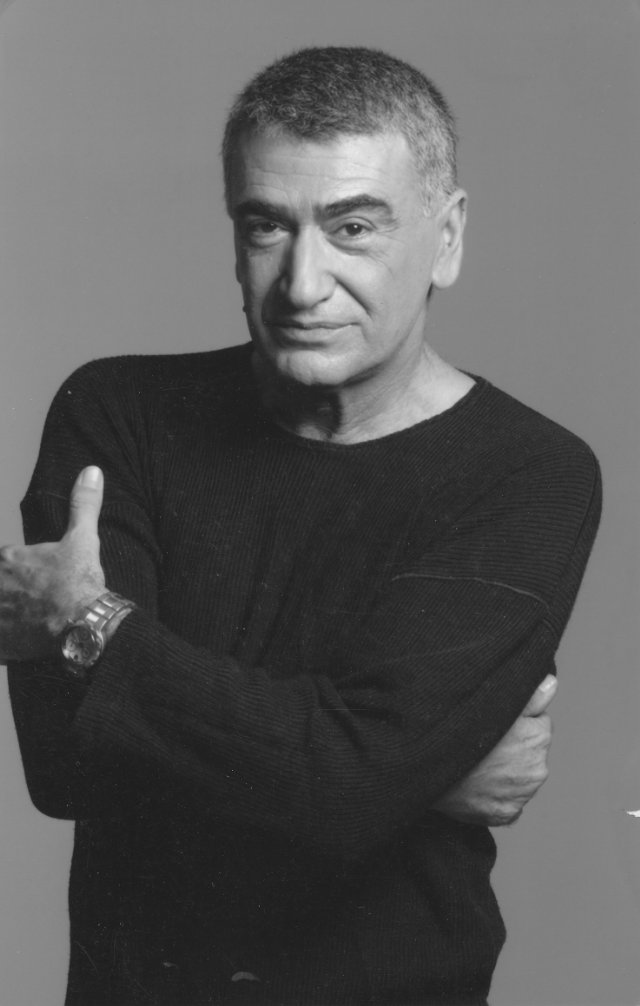The economic model for Arab cinema is broken. Despite a dramatic increase in film production in the last decade, spurred by increased funding from within and from without, as well as by encouraging participation of Arab films in renowned film programs and festivals the two remaining legs of product delivery—distribution and exhibition—are failing the promise of such production by underserving Arab audiences. Considering the potency and populist appeal of normatively constructed films, rigorous study of the causes and ramifications of such failing would be in order. Yet, though transnational cultural, political and economic forces have described and attenuated Arab filmmaking since the colonial epoch, a new phenomenon has manifested and grown since around the beginning of this century—an Arab cinema support network of funding, investment and showcasing, primarily in the Persian (or Arab if you prefer) Gulf region. However, as cultural critics have long observed, cultural production instrumentally takes place within the confines of ideological and theoretical models. I herewith propose that a web of intersecting and intervening economic and political forces has evolved in the film industry within and across the twenty-two Arabic speaking nations, a trans-Arab cinema.
Transnationalism and neoliberal governmentality
Transnational serves the purposes of an investigation into the cinema industry, not only because the mechanisms of such an industry function in domains “above the level of the national but below the level of the global,” but also because “the intermediate and open term ‘transnational’ acknowledges the persistence of the agency of the state, in a varying but fundamentally legitimizing relationship to the scale of ‘the nation.’ At the same time the prefix ‘trans-‘ implies relations of unevenness and mobility.” (Durovicova ix)
Thus, transnationalism does not entail a hegemonic imposition on the workings of the nation-state in the totalitarian connotation of the term global, but intersects its functions and intervenes its methodologies. If the confabulation of methodologies and functions, corporeal and imagined, makes for a system then such a system “is a congeries of functions, bureaus and levels spread across different sites.” (Gupta and Sharma 278) Scholars have commonly remarked in recent years about the expiry of the nation-state in the face of global neoliberal forces. Though the nation-state as entity and as cultural artifact has been challenged, even reformed (Gupta and Sharma 277), in the era of a neoliberal globalization that has come to describe the world order in the wake of the demise of the Soviet global agenda, other scholars have called for a reexamination of its new forms so as to assess its influence on filmmaking. (Hjort and MacKenzie 2)
If a nation-state is a system reformed and reforming within a neoliberal order then what is being contested and reformed is the actuation of what Foucault termed governmentality. Governmentality may be broadly described as the way with which collective thinking attends to governing, a thinking that necessarily involves national economies and whose apparatus operate vis-à-vis the neoliberal global order. (Dean 7-13) Governmentality appeals discursively precisely because of the decentering of capital within the neoliberal order that has come to describe global flows and exchanges of capital, a phenomenon that has challenged Marxist analyses of the power-capital relations within the boundaries of nation-states. (Newman 7) Indeed, a focus on “domestic capital” falters because of “empirical evidence on the transnationalization of capital and the increasingly salient role of transnational state apparatuses in imposing capitalist domination beyond the logic of the inter-state system … The end of the extensive enlargement of capitalism is the end of the imperialist era of world capitalism. The implacable logic of global accumulation is now largely internal to the complex of fractious political institutions through which ruling groups attempt to manage those relations.” (Robinson 5)
Yet, neoliberalism while embraced including per-force by nation-states has compelled them to realign their power structures and bureaucratic workings in the name of flexibility. It sustains the interest of capital within the state by “opening the market to centralized capital and monopoly power” (Harvey 25) engendering a resistance not only within the governing class structures of nation-states whose power has been undermined by their participation in the neo-liberal global order, epitomized by such bodies as the World Trade Organization and the World Bank, but also by peoples and parties that have exposed the failings of the neoliberal ethos as put forth by such institutions and the state actors who bid on their behalf. (Harvey 50)
The Arab Spring revolts, which began in Tunisia in 2010, speak to this populist dissatisfaction. Linked upheavals against the regimes of postcolonial states in which revolting people and parties took advantage of the transnational systems of digital and new media, arguably initiated by the launch of the first Arab communications satellite in 1985, by the Arab Satellite Communications Organization dubbed Arabsat—headquartered in Saudi Arabia, ushering in an era of state and privately owned satellite television broadcast in 1991 with the launch of the private Saudi channel named MBC. The era of what I have dubbed as Trans-Arab cinema would commence over a decade later, in Saudi Arabia’s less conservative neighbor the UAE, with an interest in exerting its own influence through transnational cultural production, with the launch of the Dubai International Film Festival and its affiliated Dubai Film Market in 2004.
Arab Transnational Filmmaking Intensifies:
Transnational Arab filmmaking has existed for decades. The Arab World and Africa’s only vital national film industry (until Nollywood’s emergence in the 1990s) in Egypt was started by foreigners, primarily Italians, who continued to direct and produce Egyptian films well past token independence of 1922. Although, even after Egyptians had taken over the reins of filmmaking, western cultural, including cinematic, influences persisted as manifest in the continued use of western music, source material (which was downright plagiarized) and generic categories. (Schochat 23, 26) Whereas cinemas of the Maghreb (Tunisia, Algeria and Morocco) have for decades involved that which has “caught up” with the cinemas of many Arab nation-states: the engagement of what Hamid Naficy has dubbed accented cinema comprising the categories of exilic, diasporic and postcolonial ethnic cinemas. The French government has maintained and promulgated a policy to support cultural production by citizens of its ex-colonies, including by Maghreb filmmakers, many of whom live between their country of origin and that of residence. (Higbee 52) Additionally, since the 1980s a wave dubbed beur cinema has emanated in France, a cinema represented by the works of minority Maghrebi French natives, those who Naficy would describe as postcolonial ethnic. (Grassilli)
If Naficy holds that the experience of expatriate filmmakers informs stylistic parallels in their works then what of the expatriates (many of whom also repatriates to the Middle East) who predominantly make up the bureaucracies that participate in the economies of Arab filmmaking?
I propose to examine the economies of filmmaking as Andrew Higson has, through production, distribution and reception (Higson 67-69)—though I hold that the last must be coupled with exhibition, within cultural events, in commercial cinemas, in make shift venues (cafes for example), on TV and through personal computers. Although a transnational analysis of the Arab film industry, which I see as involving Arabs living within and away from the Middle East, benefits from what Hjort and MacKenzie have observed as a capacity to “mediate successfully between macrosociological and agential levels of description” (Hjort and MacKenzie, Introduction 1) a restriction of such analysis to an Arab transnationalism is in order, one that specifically focuses on how Arab films narrate their nations still, to borrow the Homi Bhabha term, though they often narrate multiple nations, as “new transnational dynamics in the cinema industry create further departures from the schemes of post-colonial production,” including the decade long and increasingly impactful funding for filmmaking, film practitioner training, and film showcasing and promotion all taking place concomitant to a continued disregard for addressing the broken models for distribution and exhibition/reception of Arab films to audiences across twenty-two nation-states of predominantly Arabic speakers often declared as the intended audiences by Arab filmmakers, producers and funders.
Notable here is that though digital technology has, to use economics parlance, reduced the barrier for entry into the industry, precisely the financial barrier, it has not resolved the economic barrier that afflicts all Arab films because of the comparative paucity of cinemas per capita, because of satellite TV’s refusal to take on the role of distribution vehicle and because of piracy, along with other factors that I will scrutinize in relation to four Arab narrative features made in the decade old funding surge. These four titles do not represent all currents in Arab film production and do not dismiss the value of examining persistent national cinemas in Egypt and Morocco. Yet the films I have selected for discussion below do make the case, I posit, that recent trans-Arab economies of filmmaking have emerged, economies deserving of analysis beyond the scope of this essay.
Tans-Arab Cinema: Four Case Studies
As noted earlier, I do not propose to strip an analysis of the Arab film industry of its transnational dynamics outside of the Arab World, but to underscore the dynamics of such transnationalism within it, particularly as the region undergoes dramatic shape shifting, not only in the manner of toppling regimes or instituting new constitutions and new modes of national governance, but also in the questioning of the viability and validity of the region’s national boundaries predicated by and large on the boarders drawn up in the Sykes-Picot agreement nearly a century ago. (Wright)
Black Gold (Day of the Falcon)(2011):
At $55 million, reportedly the most expensive Arab film production of all time. Black Gold (which has since been renamed Day of the Falcon, possibly to improve the universally panned film’s chances at recouping some of its cost) was funded by the Qatari governmental production fund the Doha Film Institute, during the tenure of Australian-English executive director Amanda Palmer. Although the film tells the story of Arab Bedouin and was shot in Qatar and in Tunisia (while the Jasmine Revolution’s protests raged), none of the principle crew members is Arab and only one of the lead four roles is performed by an Arab.
More problematical are the rhetorical tropes, including visual, of the film as well as the screenplay, drawn from the novel The Arab, by Hans Ruesch, who had never been to the Arab World. In his review of Black Gold, Variety’s Jay Weissberg opined, “In this post-Edward Said era, things apparently haven't moved from the fantasy depictions of Rudolph Valentino's ‘The Sheik’ (1921) and 1933's ‘The Barbarian’ with Ramon Novarro. Annaud has acknowledged using 19th-century orientalist painters as inspiration; the harem scenes with an underused Pinto could have been lifted from a Victorian tableau vivant, and not in a good way.” (Weissberg)
Were the representatives of the Doha Film Institute (DFI) so eager to participate in the Hollywood styled (although in this case not Hollywood produced) international commercial cinema industry, so as to back a project with such problematical aspects of source material and of casting? Was DFI so eager to mimic itself, to borrow Shadin Tageldin’s term? (Tageldin 49) What is to explain the resurgence of the market for Orientalist paintings in recent years, propelled primarily by record price purchases made by people belonging to the lands whose cultures had been mendaciously distorted by such paintings?
Of the three other major productions that the DFI funded during Palmer’s tenure, two—The Attack and The Reluctant Fundamentalist—center thematically on suicide attacks (or homicide attacks, as the Bush administration called them or martyrdom attacks, as many Palestinians call them). This is not an isolated occurrence: Of the eleven Middle East narrative features that the Sundance Institute has supported, five center thematically on violence or on the threat of violence. Moreover, one of the most celebrated Arab narrative features of this year is the Moroccan/French production Horses of God, whose story fictionalizes the developments leading to the multiple suicide attack operation carried out in Casablanca in 2003.
I am suggesting that the depiction of violence in transnational Arab films is informed by a neoliberal ethic, one that is particularly concerned with movement-image, to use the Deleuzian term, predicated on the stable sustenance of oil production and transport. Implicated in this dynamic in the case of Black Gold is the film’s producer Tarak Ben Ammar, a relative of Tunisia’s first president Habib Bourguiba, business partner of Silvio Berlusconi and associate and advisor to Saudi media mogul Prince Alwaleed bin Talal. (Serafini) Several months ago, Ben Ammar formed a strategic partnership with another investments media mogul Egyptian billionaire Naguib Sawiris (who like Ben Ammar, continually moves between Europe and the Arab World) to produce movie and TV content for the Arab World and beyond. (Vivarelli) French-Tunisian Ben Ammar had made a name for himself in the late 70s as a film producer and production studio owner in Tunisia, who could arrange for location shooting for Hollywood spectacle big budget pictures, such as Star Wars and Raiders of the Lost Ark. (Serafini)
In the publicity following the premiere of the film in Doha, Ben Ammar deflected questions about the film’s cast by reminding of the Arab ethnicity of Tahar Rahim, the film’s lead, and that Antonio Banderas hailed from Andalusia. (Mottram) Ben Ammar’s neo-liberal model for the cultural industry is amply demonstrative of the identity shuffling, shape-shifting transnationalism discussed earlier. He and other neoliberal capitalists have put their money into Arab film production, in part supplanting national funding apparatuses.
Winter of Discontent (2012):
Launched with a six-page treatment and a phone call from director Ibrahim el-Batout to Egyptian movie star Amr Waked, on the eve of the overthrow of Mubarak on January 25, 2011 (Waked and Hanafy) Winter of Discontent has been submitted by the Egyptian government as its official entry into the competition for Best Foreign Language Oscar. This is notable for two reasons: El-Batout’s first narrative feature film Ein Shams (Eye of the Sun) became the first film to screen in commercial theatres in Egypt, not having received authorization for its screenplay from the censor prior to production. Secondly, Winter of Discontent was produced and financed in part by the director himself, who had won one of the highest denomination prizes of any film festival—the $100,000 Best Arab Film award in the now defunct Doha Tribeca Film Festival.
Ibrahim el-Batout was a documentary producer, director and cinematographer for eighteen years, covering twelve conflicts including three in Iraq. El-Batout shot the footage depicting the US invasion of Iraq in 2003 in Ein Sham himself. Moreover, the film begins with an Iraqi folk song being performed by an Egyptian singer in Cairo, as well as footage of and narration by the character of an Egyptian physician working in Iraq, seemingly as part of a humanitarian effort, who reports on her investigation of a possible linkage between US weapons deployed and cancer incidence in children. (Batout)
El-Batout’s three narrative films to date have been characterized by what David Martin-Jones has identified as a fractured narrative structure. Such films stylistically and thematically fuse time-image and movement-image assignments with which Deleuze had distinguished art and commercial films: “In either case what we see in these non-linear films is a crisis of national identity formally rendered literal by multiple, jumbled or otherwise discontinuous narrative time. As such these images are time-images ‘caught in the act’ of becoming movement images.” (Martin-Jones 37)
El-Batout is not the only Arab filmmaker to make what some have dubbed hyperlink movies— works of fractured, elliptical narrative structures that gathered traction in world cinema, by the likes of Alejandro González Iñárritu, Tom Tykwer, and Fatih Akin before being acknowledged by Hollywood cinema in the Best Picture award presented to the film Crash. . Ahmad Abdalla has done similar with his Microphone, although, an investigation of the prevalence and trans-Arabism of such filmmaking stylistic and thematic methodology is a topic for another occasion.
Wadjda (2012):
Hyped in the US as the frontrunner for the Best Foreign Language Film Oscar (Lyttelton), Wadjda though internationally lauded for its artistic accomplishment has received much more attention for its operative accomplishment—its being the first narrative feature film to be made by a Saudi woman. Wadjda was shot in Saudi Arabia with an all-Saudi cast.
Director Haifaa al-Mansour sought to make an accessible, allegorical, celebration of will-to-power and by economic and institutional accounts has succeeded. Wadjda has already secured worldwide theatrical distribution including in the coveted US market. Yet, with all of the enthusiasm for the film on the festival circuit and in the press, problematical discourses have emerged, including the ignorant and flagrant (Garcia)—to be expected—as well as, arguably more troubling, the over-emphatic and exaggerated, betraying a neoliberal concern.
What of the iterated observations of the irony of the film’s unavailability in a country which permits no public cinemas? When in truth among the twenty two Arab countries from which figures exist, many have among the fewest screens per capita in the world: Algeria, Syria, Palestine and Tunisia—public cinemas are virtually nonexistent. (Gonzalez) Moreover, why have such observations so conveniently ignored TV broadcast and internet streaming and downloads including of the pirated? Middle East film industry observers are well aware of the major challenges facing the industry in its distribution and exhibition systems. Considering that only three Arab countries have a viable theatrical exhibition industry—the UAE, Lebanon and Egypt (Khawaja)— considering that Arab films are challenged to garner distribution in neighboring countries despite cultural, historical, and linguistic similarities (1Co) and considering what renowned Egyptian filmmaker Yousry Nasrallah has observed as a cessation in buying film broadcast right on the part of the two principle Arab movie satellite channels ART and Rotana (Adler), both of which owned by Prince Alwaleed bin Talal (whose Abu Dhabi based Rotana Studios co-produced Wadjda as it so happens).
One last commonly bandied take on Wadjda that lacks scrutiny is that of the degree to which the film has challenged the strictures of the Saudi state, in its illustration of the subjugation of women and its call for a solidarity among the oppressed and their allies to challenge the system. Yet, as director al-Mansour has observed:
“Liberal arts should play a greater role in shaping the Arab nations. We see rising fundamentalist and conservative ideologies in Egypt and Tunisia, and we need to create space for arts to grow and call for higher human values such as tolerance, acceptance and rights. Activists tend to work against the system but I really want to work within it. A lot of people in Saudi Arabia are against a female film director voicing her opinion, but I still feel they respect me because I work within some sort of system. I don’t try to push against it as much as create a dialogue. Conservative societies shut off when their values are threatened. We should create a space where they can feel part of the world, not outside it.” (Powell)
Not only was Wadjda supported by a member of the Saudi royal family in Alwaleed Bin Talal, but the film would later be submitted by the Saudi government itself for participation in the competition for the Best Foreign Language Academy Award. Thus, confirming that despite the film’s provocation it had managed to secure official state sanction.
Rock the Casbah (2013):
The second feature film by Laila Marrakchi, financed by French studio Pathé, employs methodical and thematic approaches consistent with her first Marock. Both films are melodramas. Both deploy social taboo as plot propellers, in the case of a latter the taboo is a McGuffin of sorts. Both films relate stories of Morocco’s elite principally. Both are conventional in structure and style, intently commercial projects despite their determined challenging of traditions that subvert and suppress women. Marock, involving an appreciable amalgamation of Romeo and Juliet and autobiography, succeeded beyond all expectations in Morocco in 2006 (Pajon) and Rock the Casbah is expected to do well internationally (Toronto Film Review: Rock the Casbah).
Rock the Casbah’s class critique is in passing but its feminist critic is the engine of the story, as the film focuses primarily on three sisters who have gathered to attend their father’s funeral in has grandiose villa where their mother still lives. It was to be expected that Marrakchi would seek out movie stars who could help sell the film’s distribution rights in as many markets as possible, what with the film’s evident commercial interest—from its title, to its Anglo and Franco content, to its “white telephone” mise-en-scene, to its generic underpinnings. What is surprising about Marrakchi’s casting choices, being perhaps too politically progressive to cast white actors to play Arab characters, was not that she did not cast Moroccan born actors, not uncommon for “exile” Maghrebi cinema, but that she did not cast all Maghrebi Europeans. The father, mother and one of the sister characters are played by non-Maghrebi Arab (and Arabic speaking) stars with appeal and recognition outside the Arab World.
Marrakchi, asked about her casting of Arab (presumably non-Moroccan) actors, remarked that doing so helped cast a family with similar features, as well as that she had wanted to lend the film an Arab and International dimension. (Radsi) I reckon the latter justification more like it. What is likely at play is an interest in casting actors who would not raise the ire of critics of false cultural, including cinematic, representation, such as in casting, while helping secure distribution in a market that weighs actors’ renown heavily. This is not unusual; see Black Gold and Winter of Discontent above. What is particular to this case I find is the Francophonic connection. Whereas French is widely spoken by all social classes in Morocco, it is relatively exclusive to the upper class in the non-Maghrebi Arab World. Indeed, of the three non-Maghrebi actors cast, only Hiam Abbas speaks Arabic in the film. Omar Sharif and Nadine Labaki may not have had the chops to learn a Moroccan dialect to order, but they could speak French enough like a Moroccan to pass. Rock the Casbah presents its own case of nostalgia inflected self-mimicry.
Conclusion
What I have attempted to do is to make the case for a specific theoretical approach to analyzing Arab cinema. I have certainly not fully charted what I have observed as a particular transnational system, a trans-Arab cinema, within a complex of transnational cultural production. What I have attempted is to shine a light on some of the symptoms, modalities and idioms of a distinct transnational subset, a layering of post-colonial, governmental, and transnational forces acting upon a region with a high degree of commonality in its shared history, its religions, and its languages. As revolutions unfurl and civil wars rage, while sectarian strife manifests and shifting alliances take place, particular attention must be paid to arguably a most popular and prominent cultural product.
Bibliography
Conference on distribution and promotion of Arab films: Obstacles and solutions. Paris: Institut du Monde Arabe, n.d. 1. Electronic. <http://webcache.googleusercontent.com/search?q=cache:http://euromedaudiovisuel.net/Files/2013/06/26/1372262567377.pdf>.
Adler, Tim. "Arab Cinema Could Collapse Completely, Abu Dhabi Festival Attendees Hear." The Hollywood Reporter 16 October 2012. Electronic. <http://www.hollywoodreporter.com/news/arab-cinema-could-collapse-completely-379236>.
Batout, Ibrahim El. Ibrahim El Batout--Official Website. n.d. 18 Novermber 2013. <http://ibrahimelbatout.com/index.php?option=com_content&view=article&id=75:egypt-today&catid=38:ein-shams-press&Itemid=59>.
Dean, Mitchell. Governmentality: Power and Rule in Modern Society. London: Sage, 1999.
Durovicova, Natasa. "Preface." Durovicova, Natasa and Kathleen Newman. World Cinemas, Transnational Perspectives. New York: Taylor & Francis, 2010. ix-x.
Garcia, Maria. "Wadjda." Cineaste 38.4 (2013): 51-53. Document.
Gonzalez, Roque. Emerging Markets and the Digitalization of the Film Industry: An analysis of the 2012 UIS International Survey of Feature Film Statistics. NGO information paper. Montreal: UNESCO Institute for Statics, 2013. Electronic. <http://www.uis.unesco.org/culture/Documents/IP14-2013-cinema-survey-analysis-en.pdf>.
Grassilli, Mariagiulia. "Migrant Cinema: Transnational and Guerrilla Practices of Film Production and Representation." Journal of Ethics and Migration 34.8 (2008): 1237-1255. Document.
Gupta, Akhil and Aradhana Sharma. "Globalization and Postcolonial States." Current Anthropology 47.2 (2006): 277.
Harvey, David. Spaces of Global Capitalism: Towards a Theory of Uneven Geographical Development. New York: Verso, 2006.
Higbee, Will. "Locating the Postcolonial in Transnational Cinema: The Place of Algerian Emgire Directors in Contemporary French Film." Modern and Contemporary France 15.1 (2007): 51-64.
Higson, Andrew. "The Limiting Imagination of National Cinema." Hjort, Mette and Scott MacKenzie. Cinema and Nation. New York: Routledge, 2000. 63-74. Document.
Hjort, Mette and Scott MacKenzie. "Introduction." Hjort, Mette and Scott MacKenzie. Cinema and Nation. New York: Routledge, 2000. 1-12.
Hjort, Mette and Scott MacKenzie. "Introduction." Hjort, Mette and Scott MacKenzie. Cinema and Nation. New York: Routledge, 2000. 1-12. Document.
Khawaja, Moign. Interview: Tarak Ben Ammar – Arab Film Producer and Distributor. 31 July 2012. 20 November 2013. <http://arabiangazette.com/interview-tarak-ben-ammar/>.
Lyttelton, Oliver. Oscars: Will Saudi Arabia's 'Wadjda' Win The Best Foreign Language Film Award? 18 November 2013. 20 November 2013. <http://blogs.indiewire.com/theplaylist/will-saudi-arabias-wadjda-win-the-best-foreign-language-film-award-20131118?page=2#blogPostHeaderPanel>.
Martin-Jones, David. Deleuze, Cinema and National Identity: Narrative Time in National Contexts. Edinburgh : Edinburgh University Press, 2006. Document.
Mottram, James. "Tarak Ben Ammar – Golden Touch." MovieScope 2 April 2012. Electronic. <http://www.moviescopemag.com/insiderspov/tarak-ben-ammar-golden-touch/>.
Newman, Kathleen E. "Notes on Transnational Film Theory." Nataša, Durovicová and Kathleen E. Newman. World Cinemas, Transnational Perspectives. New York: Taylor and Francis, 2010. 3-11. Document.
Pajon, Par Léo . "Rock the Casbah--Laila Marrakchi: "Moroccans Are Condemned to Schizophrenia"." Jeune Afrique 11 9 2013. Electronic. <http://www.jeuneafrique.com/Article/JA2748p118.xml0/>.
Powell, Libby. "10 Minutes with Haifaa al-Mansour." The World Today 68.8/9 (2012): 50. Document.
Radsi, Ahmed. "Laila Marrakchi: "My New Film Is not Marock"." Morocco Events 3 September 2013. Electronic. <http://www.ahdath.info/?p=131725>.
Robinson, William I. "Beyond the Theory of Imperialism: Global Capitalism and the Transnational State." Societies Without Borders 2.1 (2007): 5-26. Document.
Schochat, Ella. "Egypt: Cinema and Revolution." Critical Arts 2.4 (1983): 22-32.
Serafini, Dom. "Tarak Ben Ammar: The Great Negotiator." Video Age International (2003). Electronic. <http://www.videoageinternational.com/articles/2003/11/article1.html>.
Tageldin, Shadin. Disarming Word: Empire and the Seductions of Translation in Egypt? London: University of California, 2011. Document.
"Toronto Film Review: Rock the Casbah." Variety 16 September 2013. Electronic. <http://variety.com/2013/film/reviews/rock-the-casbah-review-toronto-1200613933/>.
Vivarelli, Nick. "Arab Media Mavens Team Up for Global Content Creation." Variety (2013). Electronic. <http://variety.com/2013/film/international/arab-media-mavens-team-up-for-global-content-creation-1200482190/>.
Waked, Amr and Salah Hanafy. Amr Waked and Salah Hanafy - leading actors in Winter of Discontent CinemaEuropa. 9 November 2012. Electronic. <http://cineuropa.org/vd.aspx?t=video&documentID=229567>.
Weissberg, Jay. "Review of Black Gold." Variety 25 October 2011. Digital. <http://variety.com/2011/film/reviews/black-gold-1117946437/>.
Wright, Robin. "Imagining a Remapped Middle East." New York Times 28 September 2013. Electronic. <http://www.nytimes.com/2013/09/29/opinion/sunday/imagining-a-remapped-middle-east.html>.
 10-22-2014 | tagged
10-22-2014 | tagged  Ben Affleck,
Ben Affleck,  David Fincher,
David Fincher,  Gillian Flynn,
Gillian Flynn,  Neil Patrick Harris,
Neil Patrick Harris,  Rosamund Pike,
Rosamund Pike,  Tyler Perry,
Tyler Perry,  cynicism,
cynicism,  misandry,
misandry,  misanthropy,
misanthropy,  misogyny,
misogyny,  suspense,
suspense,  thriller |
thriller |  Post a Comment |
Post a Comment |  Email Article |
Email Article | 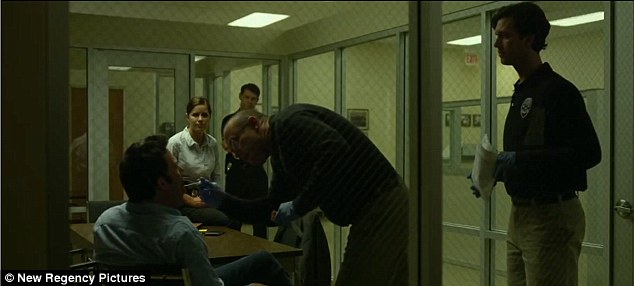 Nick Dunne ensnared in Gone Girl
Nick Dunne ensnared in Gone Girl Benjamin Van Orton ensnared in Fincher's The Game (1997)A monster that was, as is Amy Dunne in Gone Girl, the engineer of its locomotive of doom. It is a role realized vividly and fervently by Rosamund Pike. Her face alone shown in the scene that brackets the film, but not her voice, rather the voice of her spouse Nick Dunne, performed by Ben Affleck in an appropriately minor key. In this scene, as Nick strokes Amy’s hair, he shares with us his innermost thoughts; he is mooning of murder. As such, we appreciate why his townsfolk would suspect him of murdering his girl once she’s gone missing, especially after they and we discover that his wife is not his only girl.
Benjamin Van Orton ensnared in Fincher's The Game (1997)A monster that was, as is Amy Dunne in Gone Girl, the engineer of its locomotive of doom. It is a role realized vividly and fervently by Rosamund Pike. Her face alone shown in the scene that brackets the film, but not her voice, rather the voice of her spouse Nick Dunne, performed by Ben Affleck in an appropriately minor key. In this scene, as Nick strokes Amy’s hair, he shares with us his innermost thoughts; he is mooning of murder. As such, we appreciate why his townsfolk would suspect him of murdering his girl once she’s gone missing, especially after they and we discover that his wife is not his only girl. "What are you thinking? What are you feeling? What have we done to each other? What will we do?"Amy is certainly psychopathic. She is not only willing to send her husband to the chair for having cheated on her, having already undercut her own potential, Amy murders an old possessive boyfriend (a campy turn by Neil Patrick Harris) to whom she had turned, after her escape plan is foiled. Yet, she is not a misandrist. She is a misanthrope, a hater of humans, but especially humans who get in her way, who most often turn up as men.
"What are you thinking? What are you feeling? What have we done to each other? What will we do?"Amy is certainly psychopathic. She is not only willing to send her husband to the chair for having cheated on her, having already undercut her own potential, Amy murders an old possessive boyfriend (a campy turn by Neil Patrick Harris) to whom she had turned, after her escape plan is foiled. Yet, she is not a misandrist. She is a misanthrope, a hater of humans, but especially humans who get in her way, who most often turn up as men.